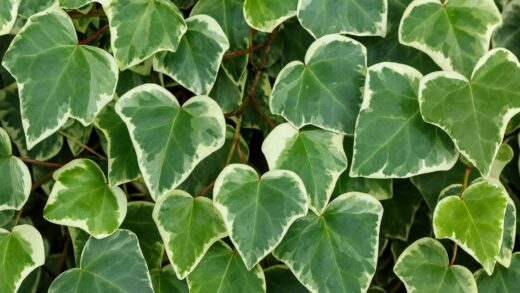Fuchsias, these wonderfully diverse and profusely blooming plants, capture the heart of every garden enthusiast. However, for them to shine in their full glory and grace us with their flowers for months on end, understanding their nutrient requirements and applying careful, balanced fertilization is essential. Many may not even realize that fuchsias are notably demanding feeders, especially during their long flowering period. Proper nutrition not only influences the quantity and quality of blooms but also the overall health of the plant, its resistance to diseases, and its lifespan. That is why, if you truly want to be proud of your fuchsias, it is worth delving into the science of their feeding, as meticulous care is richly rewarded with the stunning sight of their blossoms.
Introduction to Fuchsia Nutrient Needs
In their natural habitat, fuchsias typically thrive in humus-rich, moist, yet well-drained soils, where they continuously receive nutrients from decomposing organic matter. Under garden conditions, especially when grown in pots, this natural supply is limited, making it our responsibility to provide them with everything they need. Fuchsias have a relatively dense and active root system, capable of efficiently absorbing essential elements from the soil, provided these are available in the correct form and quantity. While there might be slight variations in needs among different varieties and hybrids, the fundamental principles of nutrition apply to all fuchsias. Their growth cycle – from spring awakening through summer’s floral abundance to autumn’s preparation for dormancy – each stage demands a different nutrient composition and amount.
The core principle of balanced nutrition is ensuring the plant receives all necessary elements in the correct proportions. It is not enough to focus on a single nutrient, such as nitrogen for lush foliage, because a deficiency in other elements can negatively impact growth, flowering, or overall resilience. An excess of one nutrient can be just as detrimental as a deficiency, as it can inhibit the uptake of other, equally important elements. The gardener’s task, therefore, is to create a sort of “personalized diet” for their fuchsias, considering their developmental stage, environmental factors, and the properties of the chosen growing medium. This kind of attention and precision yields the most beautiful results.
This article will thoroughly explore all crucial aspects of fuchsia nutrition. We will discuss essential macronutrients and micronutrients, the importance of soil pH, and fertilization strategies tailored to different growth stages. We will examine the pros and cons of organic and mineral fertilizers and identify the most characteristic symptoms of nutrient deficiencies and excesses. Our goal is to equip every fuchsia lover with useful, practical knowledge to maintain their plants in a healthy, vigorous, and abundantly flowering state. Conscious nutrient supplementation is one of the fundamental pillars of successful fuchsia cultivation.
Essential Macronutrients for Fuchsias
Macronutrients are the nutrients that plants require in the largest quantities for healthy development and profuse flowering. For fuchsias, three primary macronutrients are of paramount importance: nitrogen (N), phosphorus (P), and potassium (K). Nitrogen is primarily responsible for the growth of vegetative parts, namely the leaves and shoots. It ensures the development of the plant’s green mass and the formation of chlorophyll, necessary for photosynthesis. Fuchsias particularly need nitrogen during the intensive spring growth phase. A deficiency leads to yellowing leaves, starting with the older ones, slowed growth, and a stunted appearance. Conversely, over-application can result in excessive leaf growth at the expense of flowers, and a soft, lanky growth habit that is more susceptible to diseases.
More articles on this topic
Phosphorus plays a key role in root development, flower and fruit/seed formation, and energy transfer processes within the plant. It promotes bud formation, flower size, and seed maturation. Without a strong root system, the plant cannot absorb sufficient water and nutrients, making phosphorus availability crucial from the very beginning. Phosphorus deficiency often results in leaves turning dark green, bluish-green, or even purplish, especially on the undersides, and poor or absent flowering. The uptake of phosphorus is closely linked to soil pH, making its optimal level maintenance essential.
Potassium is the guardian of overall plant health and vitality. It strengthens cell walls, improves the plant’s stress tolerance, including resistance to drought and temperature fluctuations, and enhances disease resistance. Furthermore, it is indispensable for the intensity of flower color, an increase in their size, and sugar production processes. In cases of potassium deficiency, the edges of older leaves typically turn yellow, then brown and dry. Stems may become weak, and the plant’s overall hardiness diminishes.
Commercially available fertilizers usually display the N-P-K ratio on their packaging, for example, as 20-20-20 or 10-30-20. These numbers indicate the percentage of the three main macronutrients in the product. During the vegetative growth stage, a balanced fertilizer, or one slightly higher in nitrogen, may be ideal. To promote and sustain flowering, formulations with higher phosphorus and potassium content are recommended. Understanding these ratios is important to provide fuchsias with the most appropriate nutrition according to their current needs.
The Role of Micronutrients in Fuchsia Health
While macronutrients are needed in large amounts, micronutrients, also known as trace elements, are just as vital for the healthy development of fuchsias, albeit required only in small doses. These include, among others, iron (Fe), manganese (Mn), zinc (Zn), copper (Cu), boron (B), and molybdenum (Mo). Deficiencies in these elements can cause problems as severe as those from macronutrient shortages, as they play key roles in specific physiological processes, such as enzyme activation or chlorophyll synthesis. Often, a high-quality, complete fertilizer will contain the necessary micronutrients, but targeted supplementation may be needed if deficiency symptoms appear.
More articles on this topic
Iron (Fe) is critically important for chlorophyll formation, which gives leaves their green color and is fundamental to photosynthesis. A characteristic symptom of iron deficiency is interveinal chlorosis on younger leaves, where the leaf veins remain green, but the tissue between them turns yellow. In severe cases, the entire leaf can turn almost white. Iron deficiency is often not due to an actual lack of iron in the soil, but rather its unavailability to the plant, which can be caused by, for example, overly high soil pH. Applying iron in a chelated form makes it more readily available to the plant.
Manganese (Mn) and zinc (Zn) are also essential for numerous enzymatic processes. Manganese is involved in photosynthesis, nitrogen metabolism, and chlorophyll formation. Its deficiency can cause interveinal chlorosis similar to iron deficiency, but often appearing on younger or middle leaves, and small, brown necrotic spots may also develop in the yellowed areas. Zinc is important for the synthesis of plant hormones, such as auxin, which regulates growth, and is a component of many enzymes. Zinc deficiency can lead to reduced leaf size and shortened internodes, resulting in a stunted, rosette-like growth.
Boron (B), copper (Cu), and molybdenum (Mo) also perform specific functions. Boron is essential for cell wall formation, sugar transport, flower fertilization, and pollen viability. Its deficiency can cause dieback of shoot tips, deformed leaves, and poor fruit set. Copper is an activator for many enzymes and is involved in photosynthesis and respiration. Molybdenum plays a role in the reduction of nitrates, which is necessary for nitrogen utilization. It is crucial that these micronutrients are present in adequate, but not excessive, amounts, as their toxicity can also cause problems.
The Importance of Soil pH and Its Adjustment
The pH value of the soil or growing medium is an extremely important, yet often overlooked, factor in fuchsia nutrition. The pH scale measures how acidic or alkaline the medium is; a value of 7 is neutral, lower values indicate acidity, and higher values indicate alkalinity. The pH value fundamentally affects the solubility of various nutrients and thus their availability to plants. If the pH is not optimal, the plant cannot efficiently utilize the nutrients, even if they are present in sufficient quantities in the soil.
Fuchsias generally prefer a slightly acidic medium, with the ideal pH range for them typically being between 5.5 and 6.5. Within this range, most macro- and micronutrients are present in an optimally available form. If the soil pH is too high (alkaline), i.e., rises above 7, the availability of elements like iron, manganese, and zinc significantly decreases, which can lead to deficiency symptoms even if these elements are otherwise present in the soil. This is why iron deficiency chlorosis is often observed in calcareous soils or when irrigating with hard (alkaline) water.
If the pH value is too low (too acidic), i.e., falls well below 5.5, this can also cause problems. In such conditions, some elements, like aluminum and manganese, can become overly soluble, reaching levels toxic to the plant. Additionally, phosphorus availability can also decrease in strongly acidic media. Therefore, regular monitoring of the pH value is crucial, especially for potted fuchsias, where the pH can change more easily due to the small volume of the growing medium. Simple home pH testing kits are available for this purpose, or a professional soil analysis can be requested.
If the pH value deviates from the optimum, correction is necessary. To lower pH (acidify), one can use, for example, sphagnum peat moss mixed into the growing medium, elemental sulfur, or special acidifying fertilizers. It is important to apply these cautiously and gradually. To raise pH (make more alkaline), ground limestone or dolomite is usually used, although this is less commonly needed for fuchsias, as problems are more often caused by overly alkaline media. Adjusting and maintaining the correct pH value is a fundamental prerequisite for the effective utilization of applied fertilizers and the healthy growth of our fuchsias.
Fertilization Strategies for Different Growth Stages
Fuchsias’ nutrient requirements are not constant but adapt to the different phases of their growth cycle. Accordingly, our fertilization strategy must also be flexible to always meet their current needs. For young, freshly rooted cuttings or plants repotted in spring and just waking up, the primary goal is to establish a strong root system and healthy foliage. During this period, a balanced N-P-K ratio fertilizer, or one slightly higher in nitrogen, may be most appropriate. Care must be taken, as young, sensitive roots can easily be burned by overly concentrated fertilizer, so use more diluted solutions.
Once the plants have entered a phase of vigorous vegetative growth and are developing lush foliage, they continue to need regular, balanced nutrition. Adequate nitrogen intake remains important during this stage, but the roles of phosphorus and potassium should not be neglected, as they lay the groundwork for subsequent abundant flowering. The plants’ responses should be continuously monitored, and the fertilizer composition or frequency adjusted if necessary. This is the period when we prepare the plant for peak flowering, so nutrients must be abundantly available.
From the onset of bud formation until the end of the flowering period, the fuchsia’s nutrient requirements change. The emphasis then shifts to phosphorus and potassium, as these elements are indispensable for a rich inflorescence, intense colors, and flower longevity. It is advisable to switch to specialized “bloom booster” fertilizers, which have higher P and K content and lower N content. Excessive nitrogen in this phase can lead to excessive leaf development at the expense of flowers, which we definitely want to avoid.
As the flowering season nears its end, and if we intend to overwinter the fuchsias, the frequency of fertilization and the concentration of the nutrient solution should be gradually reduced. From September onwards, avoid using high-nitrogen products to prevent the formation of fresh, frost-sensitive shoots. Allow the plant to prepare for dormancy and for its shoots to “ripen” декоративно. In milder climates, where fuchsias may not enter full dormancy, nutrient supplementation can be maintained at a lower level. The key is to adapt the feeding to the plant’s life cycle.
Organic and Mineral Fertilizers for Fuchsias: Pros and Cons
For supplementing fuchsia nutrition, we essentially have two main types of fertilizers available: mineral (synthetic, artificial) fertilizers and organic fertilizers. Mineral fertilizers are produced industrially and contain nutrients in a concentrated, readily available form for plants. Their advantages include precisely known and controllable N-P-K ratios, easy solubility (for water-soluble types), and rapid action. They are available in a wide range, such as liquid nutrient solutions, water-soluble powders or granules, and also in slow-release forms that deliver nutrients 전쟁 evenly over a longer period. Their disadvantages can include potential negative impacts on soil life, the risk of over-fertilization leading to root burn, and the accumulation of fertilizer salts in the medium.
Organic fertilizers are derived from natural sources such as aged manure, compost, bone meal, blood meal, fish emulsion, or seaweed extracts. These make nutrients available to plants more slowly, through the decomposition activity of soil microorganisms. Their advantages include improving soil structure, humus content, and supporting the proliferation of beneficial soil organisms. There is generally a lower risk of burning, and they provide a more even, long-term nutrient supply. Their disadvantages can be a slower mechanism of action, less precisely known nutrient content, and some (e.g., fresh manure) can cause problems if used improperly.
When comparing the two types of fertilizers, it is important to consider the speed of action, long-term soil health impacts, and the risk of over-fertilization. There is no definitively “better” or “worse” choice; many experienced gardeners use the two types комбинированно, complementing each other. For example, organic matter can improve the overall condition of the soil, while mineral fertilizers can provide quick help for specific deficiency symptoms or during peak flowering. The gardener’s personal philosophy and sustainability considerations often play a role in the decision.
Specific organic options suitable for fuchsias include well-rotted compost tea, worm castings, fish emulsion (for higher nitrogen content), or bone meal (as a phosphorus source). These should be carefully incorporated into the growing medium or applied diluted. It is important to use high-quality organic materials from reliable sources and to apply them correctly to avoid introducing pathogens or damaging roots. Whichever type we choose, the key is moderation and observing the plant’s reactions.
Symptoms of Nutrient Deficiency and Excess in Fuchsias
Fuchsias are quite “talkative” plants, and if something is amiss with their nutrition, they usually indicate it through changes in the color, size of their leaves, or their growth rate. Common general signs include yellowing of leaves (chlorosis), browning, purplish discoloration, slowed or stopped growth, poor flowering, or even premature leaf drop. However, before suspecting a nutrient problem, it is important to rule out other possible causes, such as pests, fungal or bacterial infections, or improper watering or light conditions.
Among the most common deficiency symptoms, nitrogen deficiency causes general yellowing, typically starting on older, lower leaves, as the plant redirects available nitrogen to younger parts due to its mobility. Phosphorus deficiency often results in leaves turning dark green, bluish-green, or acquiring a reddish-purple hue, especially on the undersides and petioles, with poor flowering. Potassium deficiency is indicated when the edges of older leaves turn yellow, then brown and dry, as if scorched; stems may be weak, and flower quality deteriorates. A characteristic symptom of iron deficiency is interveinal chlorosis on young leaves, while magnesium deficiency causes similar symptoms but predominantly on older leaves.
Nutrient excess, or over-fertilization, can be at least as harmful, and sometimes more so, than deficiency. Excessive nutrient concentration, especially with synthetic fertilizers, can “burn” the roots, potentially leading to the plant’s demise. Signs of over-fertilization can include browning and drying of leaf tips and margins (salt burn), browning of roots, sudden cessation of growth despite feeding, or even distorted shoot growth. In such cases, salts accumulating in the soil impede water uptake and exert a toxic effect.
Diagnosing problems is not always straightforward, as some symptoms can be attributed to multiple causes, and different deficiency symptoms can sometimes overlap. Always consider the plant’s overall care, soil type, watering frequency, and recent fertilization history. If uncertain, it is advisable to thoroughly flush the growing medium with plain water to leach out excess salts, and then resume feeding with a balanced, but more diluted, nutrient solution. Keeping a care journal can greatly help in recognizing patterns and preventing problems.
Special Fertilization Tips for Trailing and Upright Fuchsias
Although the basic nutrient requirements of fuchsias are similar regardless of the variety, their growth habit – whether they are trailing or upright – can influence the frequency and method of fertilization. All fuchsias require a relatively large amount of nutrients during the growing season, especially during flowering, as our goal is always to achieve healthy, lush foliage and a continuous, abundant flower yield. The vigor of a particular variety can also provide a clue; a fast-growing, large variety will naturally use more nutrients than a more restrained dwarf variety.
Trailing or basket fuchsias are often grown in containers with a limited volume of growing medium, which can deplete nutrients faster than a larger pot or garden bed soil. These varieties are usually prized for their profuse, continuous blooming, which demands consistent energy and, therefore, nutrient investment from the plant. Consequently, trailing fuchsias often benefit from more frequent, but dilute, feedings. Good drainage is key for them to prevent waterlogging, which can lead to root rot and nutrient lockout.
Upright or bushy fuchsias can be grown in pots or, in suitable climates, directly in the ground. If grown in garden soil, their root system can spread over a larger area, and the soil itself acts as a larger nutrient reservoir, potentially requiring less frequent fertilization than potted ones. However, even in-ground fuchsias appreciate regular feeding for optimal performance, especially if the soil is sandy or nutrient-poor. Mulching can help retain moisture and contribute slowly decomposing organic matter to the soil.
The fertilization approach should always be tailored to the plant’s individual response. Water-soluble fertilizers offer good control, especially for potted fuchsias, as they act quickly and are easy to dose. Slow-release fertilizers can provide a baseline level of nutrients over a longer period, supplementing regular liquid feeding. Consider the size and maturity of the plant as well – a larger, more established plant with a more extensive root system will naturally have higher demands than a young seedling. Careful observation and responding to the plant’s feedback are key to successful feeding.
Foliar Feeding as a Supplementary Nutrient Supply Method
Foliar feeding is a technique whereby a diluted liquid fertilizer solution is sprayed directly onto the plant’s leaves. Plants can absorb a certain amount of nutrients through their foliage, via the stomata (gas exchange pores) and the cuticle. It is important to emphasize that foliar feeding is primarily a supplementary method and cannot replace the fundamental nutrient uptake through the roots from the soil. It can be most useful when a quick intervention is needed, for example, to rapidly correct a specific micronutrient deficiency.
For fuchsias, foliar feeding can be beneficial in certain situations. It can be effectively used, for instance, to quickly alleviate chlorosis caused by iron deficiency when leaves are yellowing. It can also help during stressful periods when root nutrient uptake capacity might be compromised, such as during extreme heat, excessive soil moisture, or root damage. It can also give a quick boost to a plant that seems to be lagging in development, stimulating its metabolism and vitality until problems in the root zone are addressed.
To perform foliar feeding correctly, a few rules must be observed. Always use a very dilute solution, typically one-quarter to one-half of the concentration recommended for soil fertilization, to avoid leaf burn. Spray early in the morning or late in the evening when sunlight is not intense and air humidity is higher, so the stomata are open and the nutrient solution dries more slowly, allowing more time for absorption. Ensure thorough coverage of both upper and lower leaf surfaces, using a fine mist sprayer.
It is important to be aware of the limitations and potential risks of foliar feeding. Not all nutrients are absorbed equally effectively through the leaves; macronutrients like nitrogen, phosphorus, and potassium are still most efficiently taken up in larger quantities through the roots. Foliar feeding can only be a temporary fix if the underlying problem is in the soil or root zone. If the solution is too concentrated or applied in direct sun, it can easily scorch the leaves. It is always advisable to test on a small area first before treating the entire plant. Maintaining soil health and proper root feeding remain paramount.
Practical Advice for Successful Fuchsia Feeding
One of the most important principles in feeding fuchsias is the “less, but more often” approach. This is especially true for potted fuchsias, where, due to the limited root zone, nutrients can leach out more quickly, or excessive concentration can more easily cause problems. Frequent, but more dilute, feedings provide a steadier supply, prevent root burn, and better mimic the natural environment where fuchsias continuously receive small amounts of nutrients. This approach helps to avoid sudden fluctuations in nutrient levels in the medium.
Correct watering practices are closely linked to fertilization. Never fertilize a plant with dry soil, as the concentrated nutrient solution can easily damage dry, sensitive roots. Always water the plant thoroughly with plain water first to moisten the medium, and only then apply the liquid fertilizer. At the same time, overwatering must also be avoided, as stagnant water creates an oxygen-deficient environment around the roots, which can lead to root rot and hinder nutrient uptake, even if we are otherwise fertilizing generously. The growing medium should always be moist, but not waterlogged.
Continuous, careful observation of your plants is perhaps your most valuable tool for successful feeding. Fuchsias “talk” to us through their leaves, flowers, and general appearance. Learn to interpret these signals: bright green leaves, vigorous growth, and abundant flowers are signs of health, while yellowing, wilting, or poor flowering may indicate a problem. Adjust your feeding schedule and fertilizer choice based on their response, the season, and the weather. There is no single “perfect” schedule that fits all situations.
Finally, but no less importantly, the quality of the chosen growing medium also significantly impacts fertilization success. A good quality, well-draining potting mix with some organic matter provides a good foundation. Some mixes come with a starter fertilizer, which should be factored in when starting your feeding regimen. Eventually, these starter nutrients are depleted, and your supplementary feeding becomes crucial for long-term success and flowering. Experimentation and careful observation will make you a fuchsia feeding expert over time.




















